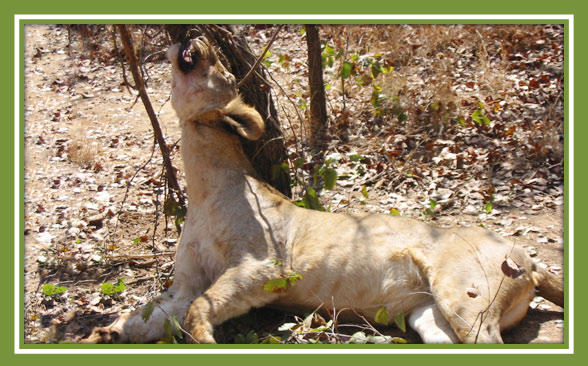|

By-catch
- Bushmeat, defined as meat derived from wild animals harvested illegally, is most likely theprimary cause of decline of wild animals across Africa. The scale of this trade is massive.
- The value of the bushmeat trade far exceeds all profits made from the illegal ivory trade. For example, the bushmeat trade in Ghana is estimated to be worth $250 million annually. In Ivory Coast this figure is $148 million annually. In Tanzania 2,078 tons of bushmeat are confiscated per year, meaning that the real volume likely exceeds 200,000 tons. Every year, about 120-160,000 animals are killed during the Serengeti migration by bushmeat poachers. In Mozambique, 182,000 to 365,000 tons of wildlife meat are illegally harvested, with a commercial value of $366 million to $730 million per annum. In the Democratic Republic of Congo, the bushmeat trade is estimated to involve 1.7 million tons of meat. In Kenya, many tens of thousands of snares are recovered every year, but no overall estimate of the scale of the busmeat trade has been forthcoming.
- Bushmeat is harvested mainly by the use of wire snares. Every day, hundreds of thousands of such snares are put out by poachers across Africa. Poachers also use dogs, rifles, gin traps, pitfall traps and even poison to catch their prey.
- It is estimated that almost 90% of animals caught in snares are not collected by poachers but left to rot. Bushmeat poaching is the least efficient use of any wildlife resource. The bushmeat trade is in no way sustainable and highly destructive of wildlife.
- Snares kill many animals not targeted by poachers, including predators like lions, hyenas, cheetahs, leopards, African wild dogs, jackals and caracals. Hundreds of thousands of predators are killed in Africa yearly as what is called “by-catch” from snares.
- Increasingly, bushmeat has become a profitable commercial venture whereby products are sold in African urban centres and even in Europe and USA.
- Bushmeat poaching occurs widely in Africa, regardless of whether nations allow legal wildlife harvesting through game ranching, trophy hunting, subsistence hunting, etc.
- Bushmeat poaching even involves communities that directly benefit from wildlife presence through consumptive wildlife-based conservancies. This occurs in Botswana, Namibia and Zimbabwe at least.
- Bushmeat poaching is a major cause of local wild animal extinctions across Africa and constitutes one of the most significant conservation threats.
- Bushmeat poaching intensity is correlated with political instability, rural poverty, corruption, lack of adequate legal deterrents, and facilitation by wildlife authorities.
Recent illegal wildlife trade summits, like those in Botswana and London, hardly address the bushmeat trade – their agendas were captured by NGOs promoting the need to tackle the illegal ivory trade and to a lesser extent the rhino horn trade. Yet the illegal bushmeat trade is by far the most significant threat to the survival of Africa’s wildlife – within and without protected areas.
What is needed to stem this enormous slaughter of wildlife?
Yes, more efficient judiciaries, prosecutors and wildlife agencies.
Yes, much more attention paid to rural poverty in Africa that directly leads to poaching resulting in empty forests and empty savannas.
And yes, much more recognition that Africa’s wildlife conservation crisis is not just about elephants and ivory.
Picture credit: africanwildlifeconservationfund.net
If you have not already signed up to our mailing list, you can add your name here and keep up to date with our ongoing work and, most importantly, DONATE to support our work to conserve the remaining fragile lion populations. Thank you
|




